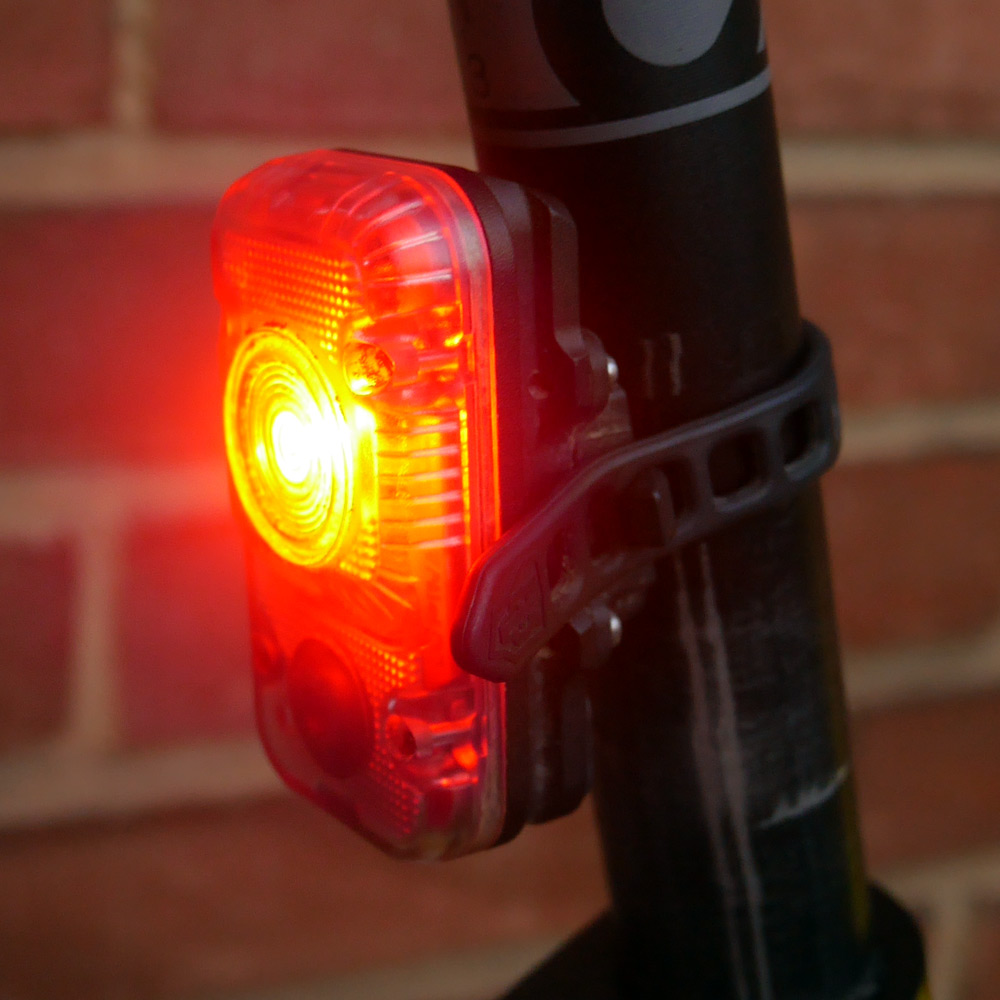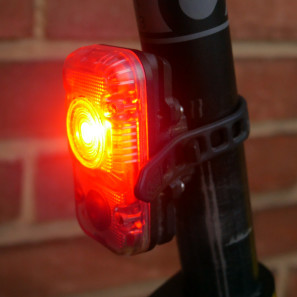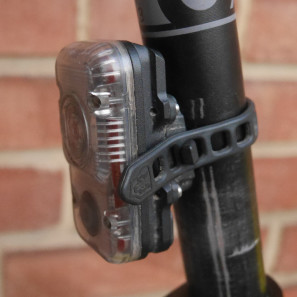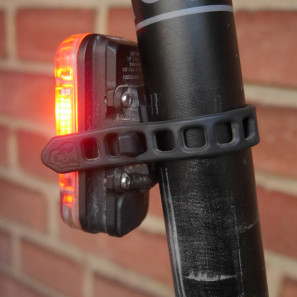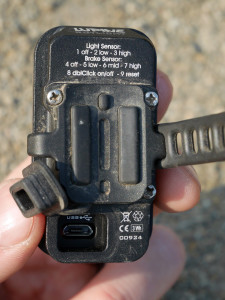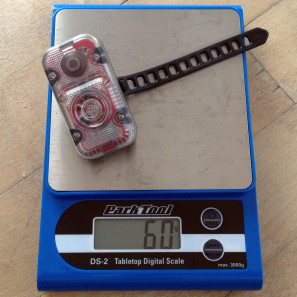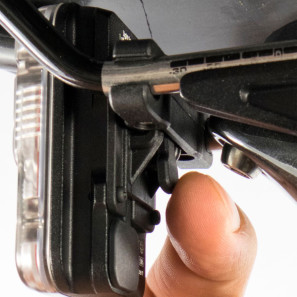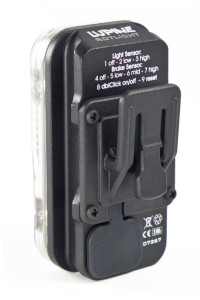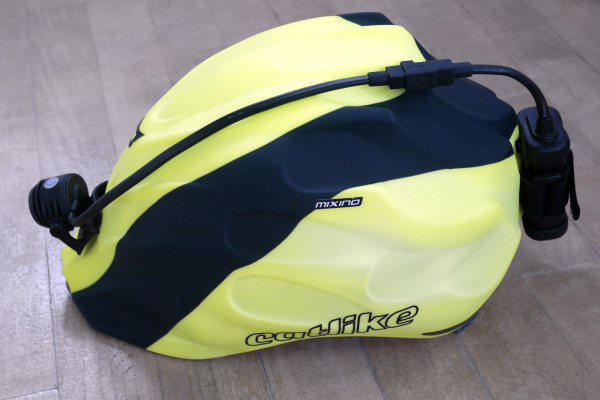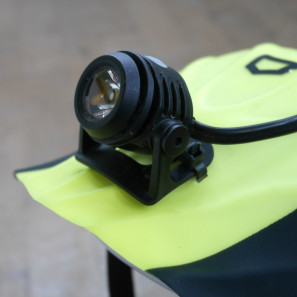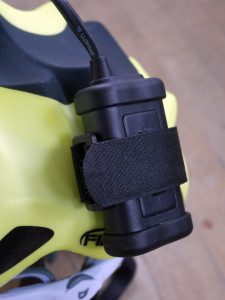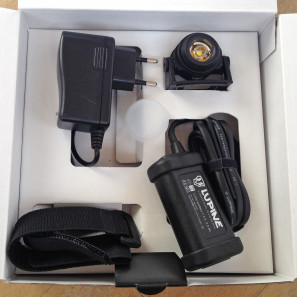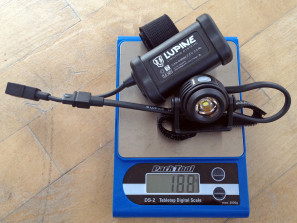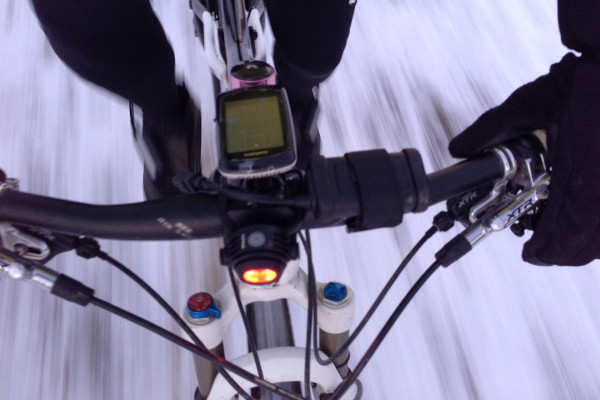A few weeks back we wrote about Lupine’s new App-based setup of their headlamps which takes away the chore of adjusting your light with a single button and a convoluted series of clicks. While that is certainly a helpful move for their high-end trail riding lights, we spent last fall/winter testing some of the more everyday/commuting products that we saw last year at the show.
Now with the days getting shorter in the northern hemisphere, we’ve started to ride home from the office in the dark again, so thought to get some reviews out on the Rotlicht and Neo for those gearing up for the darker months. We have been quite happy with the Rotlicht to the extent that it has been on or near a bike all year, and now with evening commuting and riding the Neo has been charged up and is back on a helmet.
See how the two have gotten us through the nights…
Rotlicht
The 2W Rotlicht puts out 160 lumens of bright red LED light powered by an internal, micro USB-rechargeable Li-Ion battery, and is available now for €89. It has a solid machined aluminum housing that holds everything together and on which the two available mounts attach. Beside the powerful 2W LED, what really sets this light apart is the built-in accelerometer that detects deceleration and increases the light’s brightness to act as a brake light. The light attaches with a rubber strap to standard round tubes, although a new saddle rail clip will also be available this fall.
This thing has a lot of customizable settings, too. There are 9 setup functions etched onto the back of the light, but it really seems to go a good bit deeper than that. The light has 4 light modes, which can then each be setup at 5 levels of light output from dim 0.1W up to a very bright 2W. It then has the option for 2 sensitivity levels of automatic brightness control based on an ambient light sensor or a manual light level setting. The braking feature also can be adjusted to 3 levels for how sensitive it should react to decelerations, or be turned off entirely. If you really want to set this tail light up to fit your riding style (and you probably do if you spent this much on a blinkie light) you need to sit down for 15 minutes with the instructions and do a bit of experimenting.
We’ve used the Rotlicht over the past year commuting on city streets, and when doing night rides on trails and bike paths. Once we went through the detailed setup we were really happy with the available lighting options. The light has four basic modes that you just press the single button to cycle through: solid, blinking, pulsing, and solid with stronger regular pulses.
For riding around other cyclists the pulsing mode offers a smooth rise and fall of the light output that was highly visible without being obnoxious (think sine wave.) For riding in traffic the solid+pulsing mode made for the highest visibility in both darkness and transitional times. It is possible to adjust the base solid level of light output (or let it auto adjust to ambient light levels) and then it ramps up to a fully bright flash every second or two. When I accidentally put it in this mode riding with friend, they instantly told me to shut it off, as it is really hard to look at for long; Yeah for visibility. As for the brake light function, in the most sensitive setting I felt like it came on when my speed changed often riding off-road, so we’ve stuck it on medium and left it there.
After we made it through the tedious setup (all with one button), we’ve had nothing but good experience with the light. Setup at a 0.5W base in the solid+pulsing mode for the darks of winter, Lupine claims a 5hour run time. I’d say we run pretty close to that if not a tiny bit longer. That gives me more than a week of use back and forth to the head office without having to recharge, and I can just plug it into the laptop during the day or to a USB charger overnight at home and it is ready for a more than a week of riding at probably the most visible, bright setting. I’d say it is definitely the best tail light I have used, and I never wanted to part with it, even to let other testers try it out. The only obstacle to everyone running out and buying one right away is the price.
Neo
The Neo 2 is Lupine’s entry-level LED headlamp, with a 700 lumen max light output. Like the Rotlicht it has a lot of output levels (7) and functions (5) that are all adjusted with one button and a fairly complicated user manual table. Its brightness modes range from 35-700 lumens, using 0.3-7W. It also includes 2 SOS modes that I’m pretty sure I couldn’t figure out how to activate without the manual, oh well.
The Neo’s price goes up a fiver to retail for €185 in 2016, and is available now. It comes with the 58g light head with an adjustable angle helmet mount, a 130g Li-Ion 2.2Ah battery, a silicone diffuser cap, a 120cm cable extension (which we only used when we tossed the battery in a camelbak), and a wall charger.
The included battery is the smallest and lightest that Lupine sells, an claims a 2:15 hour burn time at full power. Run time at the lowest 0.3W/35 lumen setting claims 50 hours. We always were somewhere in between. When we were using the light in the city and on quiet roads the second 3.5W/400 lumen setting seemed to be enough for commuting speeds, so we spent most of our time there and repeatedly got more than 4 hours of light, even with the occasional jump up to full power when we were on dark wooded roads and trails. The lower settings didn’t get much use from us, as it seemed that if that was all the light or visibility we were looking for, a smaller one-piece light would be a better choice. That said, we never ran the battery out on a ride, so we didn’t use Lupine’s limp-home reserve feature that runs for an hour or more at that low setting once the battery is almost depleted.
We really like the inclusion of the low power red LED function and played with it quite a bit even if it wasn’t that functional on the bike (or more not a smart idea on the bike and probably not legal on most roads.) It and the lowest power 0.3W/35 lumen setting claim 50hours of runtime, so effectively don’t affect the higer intensity burn times.
The one thing that did bug us about the light (other than the complicated setup) was that the light cycled through all of the light output levels when you want to change the brightness. So when we were in max 700 lumen mode and wanted to go down to 400 lumens to conserve energy, we had to cycle through super low power red then 35l to get back to 400l. It was possible to preset to just 75/700 lumen or 35/270/700 lumen, but doing so limited the outputs we wanted to use (red or 35l, plus 400 & 700 lumen.) All could be alleviated with a second button for up and down functionality.
The Neo isn’t really designed for trail riding, although that didn’t stop us from trying a bit. The 700 lumen is a good bit of light for such a compact package, and we took advantage of it. With its light weight and small size, we often times threw it on the handlebar (or in a pocket) when we would take off on afternoon trail rides and not really be in a hurry to get back before dark. Once the sun set, it was always enough light to ride out of the trails and light the paths and roads to get home again. In the winter when there was snow cover, it even seemed to offer enough extra light to ride whatever trails we wanted after the sun went down. While we have more powerful lights for proper night trail riding, this is the single headlight we’ve used the most in the last year.
